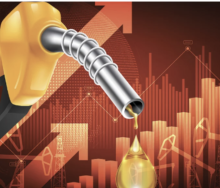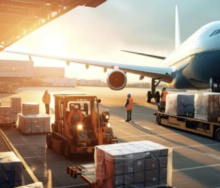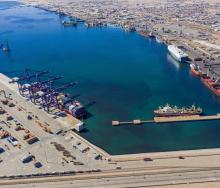Businesses and consumers will be hard hit by the latest fuel price hike which came into effect at midnight on Tuesday, taking levels back to a record high on the basis of “ominous” oil price data and on the back of the SA Reserve Bank’s latest interest rate hike.
These were among the concerns raised this week by the Automobile Association (AA) and the Pietermaritzburg Economic Justice and Dignity Group, which conducts national food price surveys.
The Department of Mineral Resources and Energy gazetted the latest fuel price adjustments, which included a 53-cents-per-litre increase in 93 and 95 petrol, taking the inland prices to R19.89 and R20.14 per litre respectively.
The price of 0.05% diesel and 0.005% diesel increased by 80 cents and 79 cents respectively, taking the per-litre prices to R18.04 and R18.07. The price of illuminating paraffin rose by R1.01 to R11.97 per litre.
The department's minister, Gwede Mantashe, cited the reasons for the fuel price hikes as the rising international price of Brent Crude Oil, which rose from 76 USD to 87 USD a barrel due to stronger-than-expected demand as the global economy slowly recovers.
Travel has also continued globally due to vaccinations, despite fears posed by the Covid-19 Omicron variant, and this has led to an increase in demand for oil. Concerns regarding the tension between Russia and Ukraine also affected crude oil prices.
The rand appreciated slightly on average against the US dollar, from R15.92 to R15.51, which ameliorated the price hikes slightly.
However, the AA described as “ominous” the oil price data that was cited as the main reason for raising fuel prices.
“Ominous oil price data is the main cause of increased fuel prices.
The large increase in illuminating paraffin in particular will hit poor people hard, as many of them rely on this fuel for lighting, heating and cooking," the AA said. "The last time Brent Crude touched current levels was in October 2014, more than seven years ago. A combination of factors is pushing oil higher, not least the imbalance between supply and demand as the lower-than-expected economic impact of the Omicron Covid-19 variant pushes economic activity higher, and crude production lags. In addition, there are political jitters around the Ukraine, which could see a switch to increased oil use throughout the EU if Russia restricts natural gas output in response to sanctions threatened by the USA and United Kingdom,” the organisation added.
“While the decrease in fuel prices for January was naturally welcomed, we remain convinced that a review of the fuel price in South Africa is necessary.
The increases for February are significant and push our country’s fuel prices near record territory again, and will, undoubtedly, have a knock-on impact on other consumer products and services.”
The AA’s petition to #ReviewTheFuel had gained momentum, it said, and almost 25 000 people had already signed it, urging the government to initiate a review of all the components of the fuel price as well as conduct an audit of all existing elements to determine if they are still applicable and correct.
The Pietermaritsburg Group's researcher, Julie Smith, said that the higher fuel price would push up the cost of all goods and services for consumers at a time when households already had less in their pockets, following the SARB’s latest 25 basis point interest rate hike that took the repo rate to 4% and banks’ prime lending rates to R7.5% last week “Neither is good for the consumer.
Neither is good for an economy on its knees.
Government controls part of the fuel price hikes via its levies, and it should be able to modify against crude oil hikes through having strategic oil reserves to push into the market and moderate prices. What is the status of our strategic oil reserves? Where is the buffer?
“Hiking interest rates when the economy is still floundering is an incredible move. We are not where the US and UK are. We are not yet in a place to start increasing interest rates,” Smith said.













